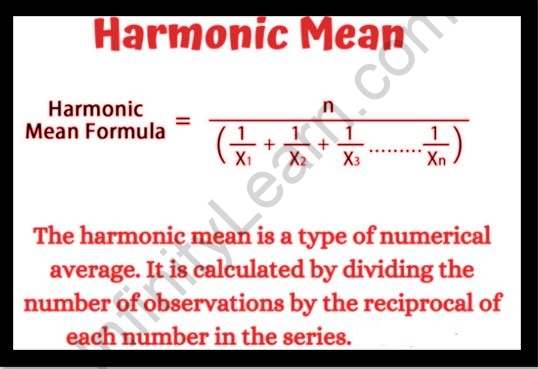Table of Contents

Introduction
A harmonic is a signal or wave whose frequency would be an integral (whole number) multiple of that of a reference signal or wave. The word can also refer to the frequency ratio of such a signal or wave to the frequency of the reference signal or wave as part of the harmonic series.
A brief outline
The first, or 1st, harmonic is the fundamental frequency or initial wave. Higher harmonics are the harmonics that follow. All harmonics have a periodic fundamental frequency, and the total number of harmonics at that frequency is also periodic.
Important concepts
The reciprocal of the mean of the reciprocals of the data values is the Harmonic Mean (HM). It is precisely defined and is based on all observations. To balance the data correctly, the harmonic mean provides less weight to the large values and more weight to the small values. In practice, the harmonic mean is utilized when it is necessary to give smaller items more weight. It is used to calculate times and average rates.
Harmonic Mean’s Advantages and Disadvantages
The harmonic mean has the following advantages:
- It is impenetrably limited.
- It can’t be computed by disregarding any of a series’ views because it’s based on all of them.
- It has the ability to improve the algebraic method.
The harmonic series has the following flaws:
- The values of the extreme items have a significant impact on the harmonic mean.
- It is not possible to determine if any of the items are zero.
Without having to worry about common denominators, the harmonic mean can be used to establish multiplicative or divisor connections between fractions. The vibrational mode or standing wave pattern of each natural frequency produced by an object or instrument is unique. Only at specific frequencies of vibration can these patterns appear within the object or instrument; these frequencies are described as harmonic frequencies, or simply harmonics.
Significance of harmonic mean in IIT JEE exam
The Oscillations and Waves chapter, which accounts for 10% of the exam questions, covers a wide range of topics. All you have to do is grasp the concepts of each topic. According to the breakdown of difficulty levels in the prior year’s tests, basic and medium-level questions make up roughly 83 per cent of the JEE paper.
FAQs
The reciprocal of the average of the reciprocals of the provided data values is the harmonic mean.
The relationship between AM, GM, and HM is GM2 = AM * HM if AM, GM, and HM are the arithmetic mean, geometric mean, and harmonic mean, respectively. Define what the harmonic mean is?
What exactly is the connection between AM, GM, and HM?
Q. Describe the steps involved in calculating the harmonic mean?
Ans: The harmonic mean is calculated in the following way:
- Step 1: Determine the reciprocal of the values given.
- Step 2: Subtract the average of the reciprocals acquired in step 1 from the total.
- Step 3: Finally, get the reciprocal of the average calculated in step 2.









